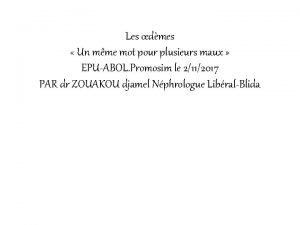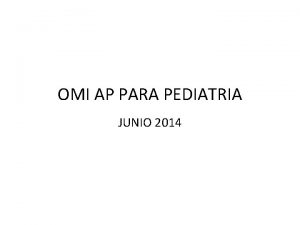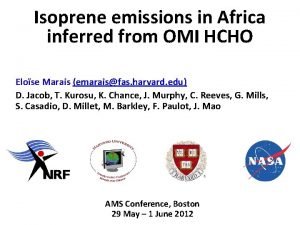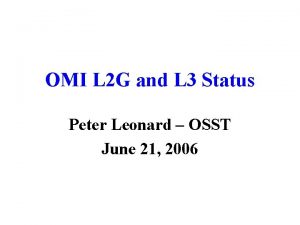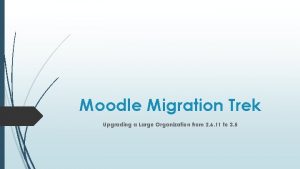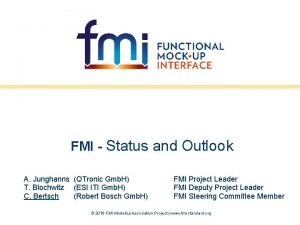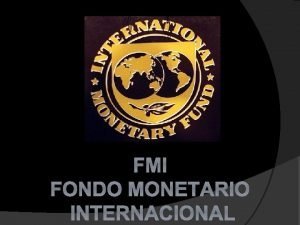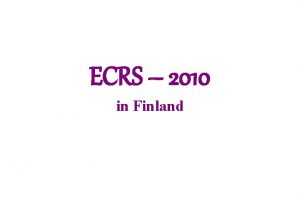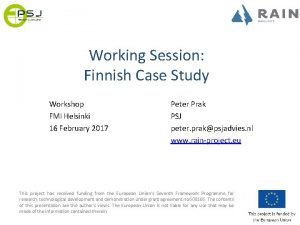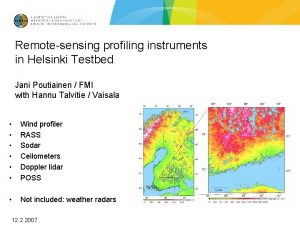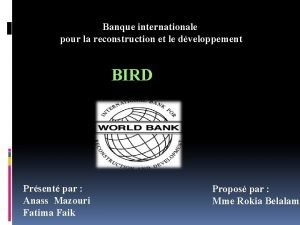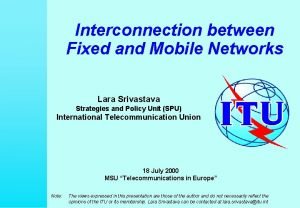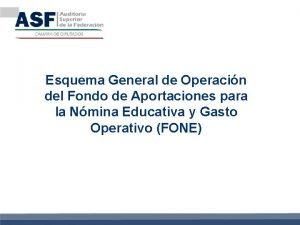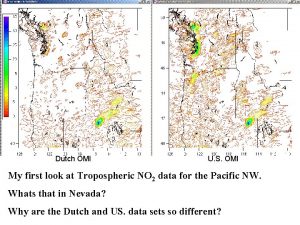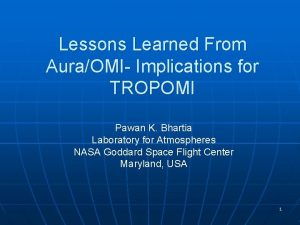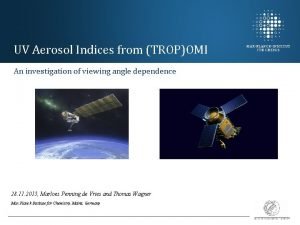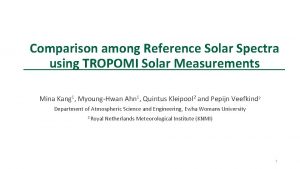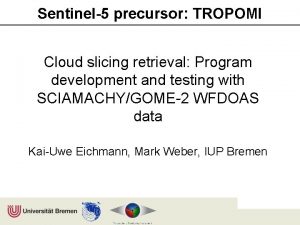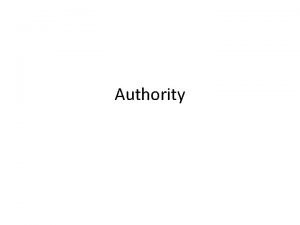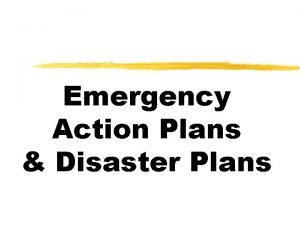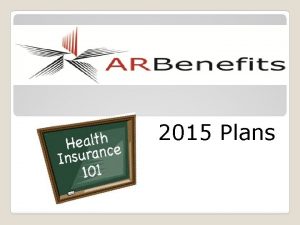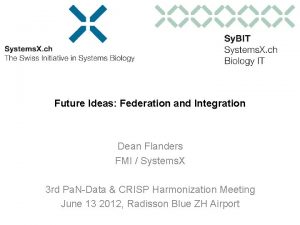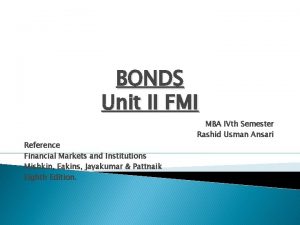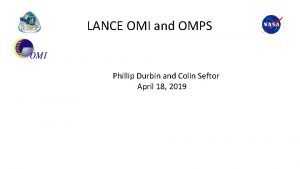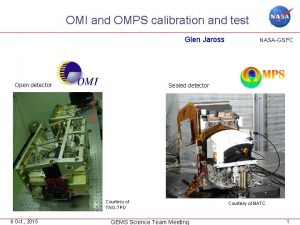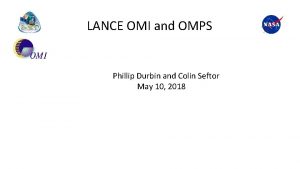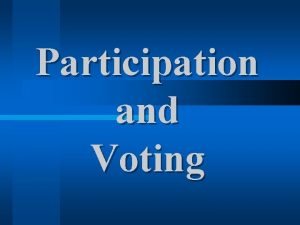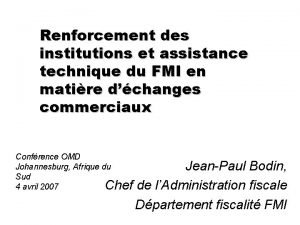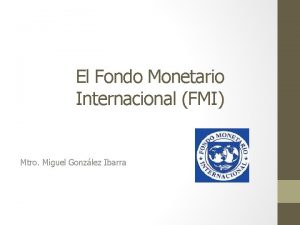FMI participation in OMI and plans for TROPOMI





















- Slides: 21

FMI participation in OMI and plans for TROPOMI J. Tamminen Finnish Meteorological Institute TROPOMI workshop KNMI, De Bildt, March 5 -6, 2008

Finland’s role in OMI project Instrument • VTT: Detectors • Patria: Electronics unit • SSF: Processing software for ground segment • FMI: Project management in Finland Scientific products (FMI) • OMUVB - Global surface UV radiation product • Very Fast Delivery (VFD) processing

OMUVB - Global surface UV radiation product • Off-line processing (Level 2 UV-B) • UV radiation (305, 310, 324 and 380 nm), UVB erythemal dose rate and daily dose • Archiving and distribution

Global OMUVB example: UV Index (clear-sky and cloud corrected)

Surface UV derived from OMI/Aura measurements Elevated surface UV amounts were observed in Ushuaia in spring 2004 after the breakdown of the Antarctic polar vortex and entering of the ozone depleted polar air masses into the lower latitudes Surface UV and total ozone in Ushuaia OMTO 3 • The UV measurement data of Ushuaia were provided by the Antarctic NILU-UV network maintained by INM, FMI, DNA/IAA, and CADIC. Clear-sky UV Index on October 12, 2004 according to OMI

Status of global surface UV products • Public release summer 2007 • OMI UV (OMUVB) data used in WMO’s Ozone Assessment 2006. • Validation: • OMI measurements are suitable for continuation of the global satellite-derived surface UV time series using a surface UV algorithm similar to the original TOMS UV algorithm

Future plans: Surface UV radiation On-going and future plans • Algorithm development: • A correction is needed to account for absorbing aerosols and trace gases • The quality of the assumed surface albedo (snow/ice) needs to be improved • Science • Long time series

VFD - Very Fast Delivery processing system • • • Sodankylä satellite data receiving station receives EOS-Aura Direct Broadcast data High latitude site: 3 -5 orbits/day Coverage: northern Europe Allows fast data processing 15 min for O 3 and UV products Sodankylä

Very-Fast-Delivery OMI data - processing http: //omivfd. fmi. fi Processing of the OMI data Total ozone (DOAS / KNMI) UV-products (TOMS / NASA+FMI) 2. 4 m dish antenna, receivers and control computer FMI ARC (Arctic Research Center) Processing facility: Linux clusters for processing, controlling and archiving In 15 min the images are available in the Internet

VFD service status • VFD service started as a technology demonstration. • Ozone and UV images available since March 2006. • Working reliably. • Products validated: • “Description and validation of the OMI Very Fast Delivery products” by Hassinen et al. accepted to JGR special issue

Future plans - VFD Other data products possible + Local products (Northern Europe) + Fast availability, regular time coverage + If fast decisions required VFD data • Atmospheric correction (AOD and ozone) in the estimation of surface reflectances • Relevant e. g. for monitoring of snow cover conditions and lake/coastal water quality (interest by Finnish Institute of Marine Research and Finnish Environmental Institute) • Methods: • Combine ground-based observations of relevant atmospheric and surface characteristics as reference information

Future plans - Aerosols Background • • Co-operation with Univ. of Helsinki and FMI Aerosol modelling Ground based measurements of aerosol optical properties Surface albedo, snow, ice On-going work and future plans: • Collaboration with KNMI to further improve of OMAERO algorithm. Evaluate the opportunities to improve the single scattering albedo retrieval by OMI/CALIOP synergy. Focus on improving the surface reflectance treatment. Validation of AOD and SSA: establish Finnish AOD network • Bayesian model selection using RJMCMC technique

Future plans - Climate modelling • Aerosols • Improved aerosol parametrization in the state-ofthe-art climate models • AOD new important parameter in climate models • Global measurements of aerosols important for climate model validations • Long time series • evaluating climate modelling • Assimilation • Environmental prediction: physical composition

Future plans: Climate • Development methods to estimate greenhouse gas concentrations (CH 4) from TROPOMI data • • Applying ground-based reference Fourier Transform spectrometer (FTS) observations from SodankyläPallas site as reference data High resolution reference spectra for calibration and validation purposes Implementation in 2008 System relevant for: • • OCO (Orbiting Carbon Observatory) of NASA: CO 2 TROPOMI: methane (CH 4) products

Sodankylä-Pallas validation site Examples of other monitoring programmes • CAL-VAL site for remote sensing satellites observing Earth’s surface and atmosphere • Complete surface (soil/snow), vegetation (land cover) and atmospheric monitoring data sets available. • Surface VIS/IR reflectance spectrum (3502500 nm) of open and forested terrain in different snow conditions (2007 ->). • WMO-GAW nework: Surface-level concentrations of CO, CO 2, CH 4 etc. • AOD, Ozone soundings, Brewers

Future plans: Climate Geographical interest in boreal forest and sub-arctic reagion • Climate - melting permafrost: • Combining/correlating TROPOMI methane (CH 4) data with MW scatterometer data (eg. Metop ASCAT)

Permafrost monitoring using MW-scatterometer data • Pulliainen et. al. (1998) developed methods for monitoring soil freeze-thawcycles • Based on dramatic change in dielectric constant of soil • Method allows operational monitoring permafrost freeze-thaw cycles using scatterometer data

Future plans: AQ modelling Key species: Sulphur and nitrogen oxides, tropospheric ozone, aerosols, some organics (formaldehyde, . . . ). Objectives: • Model evaluation with satellite data • Re-analysis studies (absolute amounts of pollutants released and transported) • Forecasting studies (model vs data) • Data assimilation • Model initialization • short relaxation time but affects strongly the short-term forecasts • Input data refinement • emission adjustments have longer-lasting but less significant impact

Future plans - Ozone Background: • Regular ozone soundings at Sodankylä/Arctic and Marambio/Antarctica started in 1989. • Experience on high resolution ozone profile measurements using satellite instruments in limb-geometry (GOMOS, OSIRIS) • Middle atmosphere modelling: ozone in CTM and GCM • EUMETSAT O 3 MSAF manager • WMO IGACO-O 3/UV coordinator Ongoing work & future plans: • OMI ozone profile validation with GOMOS and OSIRIS profiles • Soundings from Sodankylä and Marambio • 3 D climatology: combination of OMI, GOMOS and OSIRIS data • Comparison with Fin. ROSE (CTM) and HAMMONIA (GCM) models OMI vs GOMOS ozone profiles

FMI team: Johanna Tamminen OMI co-PI Aapo Tanskanen OMUVB manager (till 2008) Seppo Hassinen OMI VFD manager Jouni Pulliainen Head of Arctic Research Center (Sodankylä) Jarkko Koskinen Snow, ice, remote sensing Gerrit de Leeuw Aerosols Antti Arola OMUVB manager (2008 ), aerosols Mikahail Sofiev Air quality modelling Erkki Kyrölä Ozone, atmospheric remote sensing Heikki Järvinen Climate modelling Anders Lindfors UV research Osmo Aulamo Sodankylä receiving station Timo Pirttijärvi Sodankylä operations Juha M. Karhu Validation: Brewer data in Sodankylä Tapani Koskela Validation: Brewer and UV data in Jokioinen Kaisa Lakkala Validation: UV data in Sodankylä Marko Laine Statistical inverse problems Leif Backman Modelling, Fin. ROSE, HAMMONIA Laura Thölix Modelling, Fin. ROSE, HAMMONIA

 Jumlah entity yang berpartisipasi dalam suatu relationship
Jumlah entity yang berpartisipasi dalam suatu relationship Retention d'eau enceinte
Retention d'eau enceinte Omi
Omi Omi ap
Omi ap Omi burning
Omi burning Vex omni wheels
Vex omni wheels Omi.l
Omi.l Moodle fisma
Moodle fisma Fmu
Fmu Fmi status
Fmi status Fmi objetivos
Fmi objetivos Fmi turku
Fmi turku Fmi helsinki
Fmi helsinki Jani poutiainen
Jani poutiainen Fmi bird
Fmi bird Fmi msu
Fmi msu Fmi portal fone
Fmi portal fone Iso 22301 utbildning
Iso 22301 utbildning Novell typiska drag
Novell typiska drag Nationell inriktning för artificiell intelligens
Nationell inriktning för artificiell intelligens Ekologiskt fotavtryck
Ekologiskt fotavtryck Varför kallas perioden 1918-1939 för mellankrigstiden
Varför kallas perioden 1918-1939 för mellankrigstiden

